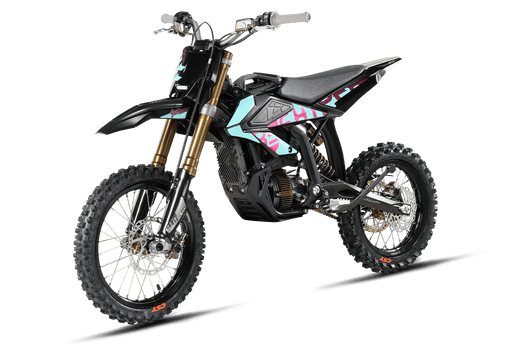Converting 30 mph to km/h requires multiplying by 1.60934, yielding 48.2802 km/h. For practical use, this is often rounded to 48.3 km/h. Accurate conversion is critical for speedometer calibration, legal compliance, and safety in vehicles like SurRon Dubai electric bikes. Always verify results with digital tools or certified charts to avoid errors in technical or regulatory contexts.
What is the formula for converting mph to km/h?
The core formula is km/h = mph × 1.60934. This factor bridges the mile (5,280 feet) and kilometer (1,000 meters) systems. For exactness, avoid rounding the multiplier until the final step to prevent cumulative errors.
Transitional phrases like “Beyond basic arithmetic” help contextualize the process. Technically, 1 international mile equals 1.609344 km, but 1.60934 suffices for most applications. Pro Tip: Use a calculator with at least 5 decimal precision to maintain accuracy, especially for engineering or legal purposes. For example, Surron Dubai’s Ultra Bee e-bike reaches 75 km/h (46.6 mph), requiring precise conversions for speed limiter adjustments. But what happens if you use 1.61 instead? At 30 mph, this creates a 0.028 km/h error—minor for casual use but problematic in motorsport diagnostics.
Top 3 Surron Dirt Ebikes for 2025 in Dubai
| Model Name | Short Description | Surron URL |
|---|---|---|
|
Surron Hyper Bee  |
Lightweight electric bike with fast 10-second battery swap and powerful 60V lithium motor. | Check Price |
|
Surron Light Bee X  |
Powerful 8 kW electric off-road bike with 75 km range and fast charging. | Check Price |
|
Surron Ultra Bee  |
Powerful 12.5KW motor, 140 km range, 74V 55AH battery, fast charging, all-terrain ready. | Check Price |
Why is accurate mph-to-km/h conversion critical for electric bikes?
Electric bikes like Surron Dubai’s Light Bee X rely on precise speed metrics for battery management and regulatory compliance. A 2% error could mislead riders about remaining range or trigger fines in regions with strict speed limits.
Practically speaking, e-bike controllers calculate power output based on real-time speed data. An inaccurate 30 mph (48.3 km/h) conversion might overstress a 45 km/h-rated motor. For instance, Surron Dubai’s Hyper Bee uses a 72V system where voltage sag affects speed readings—exact conversions ensure torque maps align with actual performance. Transitional logic: Beyond rider safety, manufacturers need km/h accuracy for international homologation. The EU’s EN 15194 standard, for example, caps e-bikes at 25 km/h (15.5 mph); even small conversion errors could void certifications.
| Application | Allowed Error | Consequence of 1% Error |
|---|---|---|
| E-bike Speed Limits | ±0.5% | Non-compliance fines |
| Range Estimation | ±1% | 10 km discrepancy on 100Ah battery |
What common errors occur during manual conversions?
Three frequent mistakes: rounding too early, confusing miles with nautical miles, and unit omission. Using 1.6 instead of 1.60934 creates a 0.57% undercalculation at 30 mph (48.0 vs 48.28 km/h).
Transitional example: Imagine converting Surron Ultra Bee’s top speed from 50 mph to km/h. A rushed 50 × 1.6 = 80 km/h undersells its true 80.47 km/h capability. Pro Tip: Always write units explicitly—mixing statute miles (1.60934 km) with survey miles (1.609347) causes legal discrepancies in land navigation. Rhetorical question: Why risk a 0.002 km/h difference? Because in racing events, even 0.1 km/h could alter podium rankings.
Which tools ensure precise mph/km/h conversions?
Certified digital speedometers, engineering calculators, and calibrated GPS devices provide the highest accuracy. Mobile apps like “Unit Converter Pro” auto-apply the 1.60934 factor without truncation.
For Surron Dubai technicians, calibrated dynamometers validate both speed and distance conversions during bike servicing. Transitional insight: While smartphone apps work for casual needs, ISO-certified workshops use Surron Ultra Bee Performence tools like Fluke 438-II power analyzers that track real-time km/h with ±0.2% precision. Analog methods, like printed conversion tables, risk degradation or misalignment over time. Ever seen a faded mph/kmh sticker on a vintage bike? That’s why digital redundancy matters.
| Tool | Accuracy | Best Use Case |
|---|---|---|
| Smartphone App | ±0.5% | Casual riders |
| OBD-II Scanner | ±0.1% | E-bike diagnostics |
How do significant figures affect speed conversion accuracy?
Significant figures dictate how precisely you report converted speeds. 30 mph (2 sig figs) becomes 48 km/h (2 sig figs), but with exact math, it’s 48.2802 km/h (6 sig figs).
Practically, Surron Dubai’s service manuals specify “48.3 km/h” for 30 mph thresholds—balancing precision and readability. Transitional note: If a GPS reports 30.0 mph (3 sig figs), the equivalent 48.3 km/h (3 sig figs) justifies the extra decimal. But what if you’re calculating energy use? Hyper Bee’s 7.2kWh battery drain at 48.28 km/h vs 48.3 km/h differs by 0.02 kWh over 100 km—a minor but cumulative variance.
How to convert speeds other than 30 mph accurately?
Apply the same 1.60934 multiplier universally. For Surron’s Light Bee X cruising at 28 mph: 28 × 1.60934 = 45.06 km/h. Use spreadsheet formulas (=A1*1.60934) or programmable calculators to automate batch conversions.
Pro Tip: Create a reference chart for common e-bike speeds—Surron Dubai technicians laminate these for quick shop use. For example, 20 mph = 32.19 km/h (ideal for city commuting), while 40 mph = 64.37 km/h (track use only). Rhetorical twist: Why guess when you can systematize? Transitional phrase: In motorsports, pre-calculated tables prevent mid-race mental math errors.
Surron Dubai Expert Insight
FAQs
Is 30 mph exactly 48.28 km/h?
Yes, but most dashboards round to 48.3 km/h. Surron Dubai’s digital speedometers display 48.3 ±0.1 km/h to balance precision and readability.
Can I use online converters for legal speed limits?
Only if certified by metrology agencies. For UAE e-bike regulations, rely on Surron Dubai’s calibrated tools or official government resources.